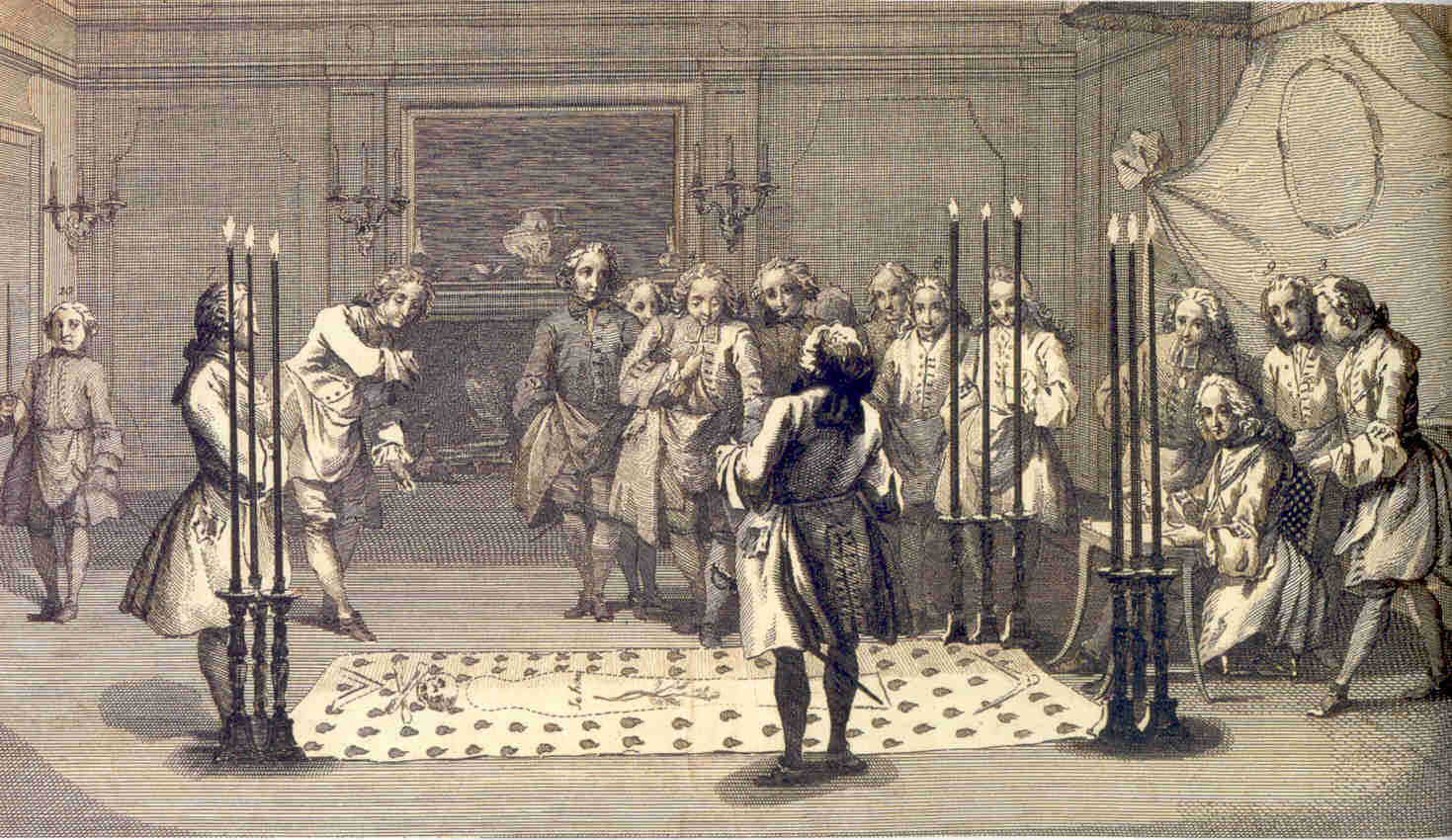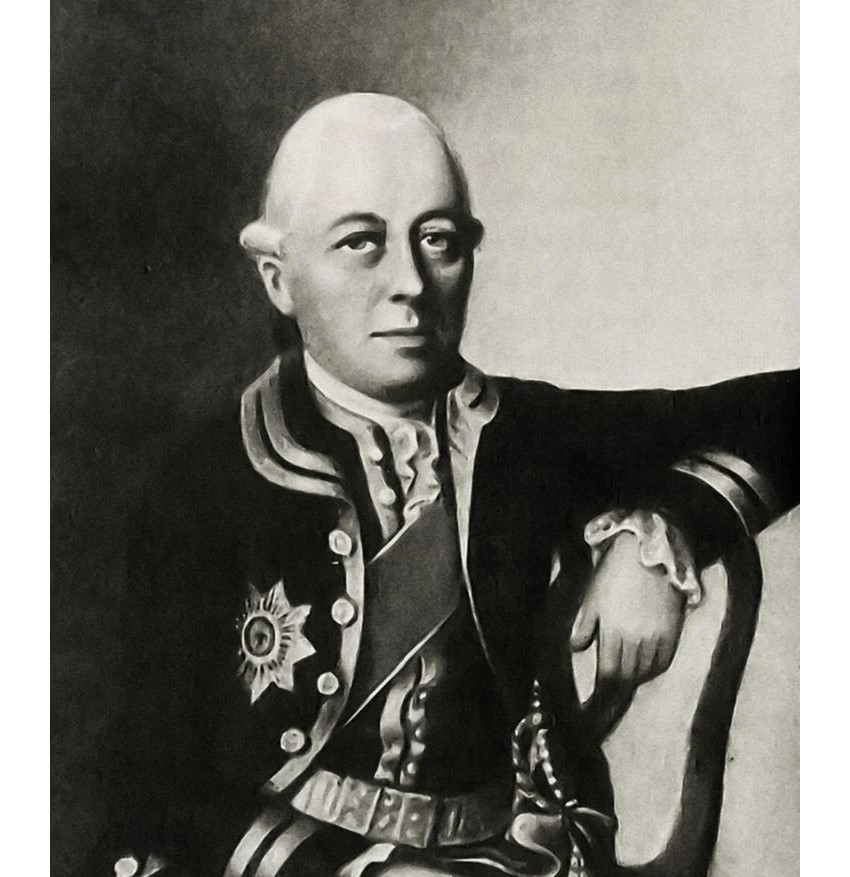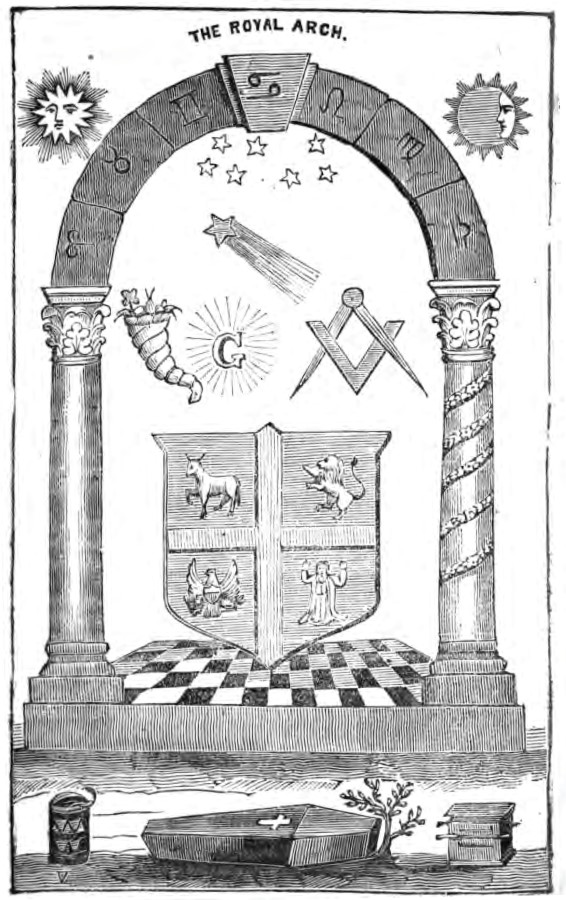From Rosicrucianism to Freemasonry
Esotericism in Europe during the 17th to 19th Centuries
In trying to understand the popularity and development of Runic Occultism, it is important to see how other esoteric currents influenced European culture prior to this. The most influential seem to be the Rosicrucian and Freemasonic movements. These two movements have had an effect on both German and French language esotericists (both of whom are of interest to us).
_sm.jpg) Soon after the publication of the Rosicrucian manifestos (mentioned in the previous class), these documents were translated into other languages, which gave rise to what is now known as the ‘Rose-Cross Movement’ or Rosicrucianism.
Soon after the publication of the Rosicrucian manifestos (mentioned in the previous class), these documents were translated into other languages, which gave rise to what is now known as the ‘Rose-Cross Movement’ or Rosicrucianism.
These manifestos centered around a German doctor and mystic known as “Father Brother C.R.C.” (identified in the third manifesto as “Christian Rosecross”). The manifestos purported to announce the existence of a previously unknown esoteric Order and used an interesting mixture of Alchemical, Esoteric Christian, Hermetic and what we could call Gnostic-Kabbalistic language or symbolism.
A public high point in the momentum of this Rosicrucian Movement was when two mysterious posters appeared on the walls of Paris in 1623. The first said “We, the Deputies of the Higher College of the Rose-Croix, do make our stay, visibly and invisibly, in this city…”, and the second ended with the words “The thoughts attached to the real desire of the seeker will lead us to him and him to us.”
Rosicrucianism has now become a spiritual & cultural movement across Europe.
Freemasonry as the Child of Rosicrucian Fraternity? 18th Century French and German Esoteric Orders
Next comes the emergence of what we now call Freemasonry.
The formal foundation of Freemasonry in England was on June 24th, 1717 (although, there are written records of Masonic lodges having meetings prior to this date). With it, Freemasonry begins to gain prominence in European esoteric circles.
There are French traditions which say that the first Masonic lodge in France was founded in 1688 (just outside of Paris in Saint-Germain-en-Laye). However, the first French lodge of English origin (whose existence is historically certain) was founded in Paris around 1725.
In Germany, the first Masonic lodge was founded in 1737 in the city of Hamburg and, a few years later in 1740, a Grand Lodge was founded in Berlin.

French ‘High Grade’ Freemasonry and the German Rite of ‘Strict Observance’ 1
Traditional Freemasonry is based upon three degrees (often referred to as the ‘Blue Lodge’):
2) Companion or Fellow
3) Master
However, additional degrees were developed and were especially popular in France called Hauts Grades or “High Degrees” (they appear to have first emerged about 1737). Most of these ‘higher’ degrees build off of the symbolism of the first three (the ‘Blue Lodge’) in order to incorporate mainly Kabbalistic, Hermetic, Chivalric or Alchemical teachings, although Templar, Rosicrucian and other esoteric systems also made their appearance.
As these new degrees became more and more popular in French esoteric circles, interest was also growing in neighboring countries. The French influence on German Masonry is connected to an interesting story:
 In 1741, a German named Karl Gotthelf, Baron von Hund was at the coronation of Charles VII in Frankfurt, where he was admitted into the Masonic brotherhood. Then, in December of 1742, Hund went to Paris and became Master of a Masonic lodge there, in early 1743. Later that same year, he claimed he was also initiated (by “Jacobite-Scottish knights”) into the Order of the Knights Templar.
In 1741, a German named Karl Gotthelf, Baron von Hund was at the coronation of Charles VII in Frankfurt, where he was admitted into the Masonic brotherhood. Then, in December of 1742, Hund went to Paris and became Master of a Masonic lodge there, in early 1743. Later that same year, he claimed he was also initiated (by “Jacobite-Scottish knights”) into the Order of the Knights Templar.
Hund further claimed to have been appointed by the “unknown superiors” of the Templars as “Provincial Grand Master” of the Order of Province VII (Germany) and was supposedly charged with the revival of the Templar Order in Germany.
In 1745, there was a Jacobite attempt to overthrow the British monarchy while most of their Army was fighting in mainland Europe, which was supposed to occur along with a coordinated French Jacobite attack on Britain. This revolt failed and soon afterwards Hund lost touch with his French Jacobite masters. Notwithstanding, in 1749, he had established a Masonic lodge in Unwürde, Germany on his estate and began working a ‘High Degree’ system. The following year, he settled in Lower Kittlitz and built a castle with an octagonal floor plan (which is interpreted as having Masonic symbolism).
The new French ‘Scottish Rite’ that Hund introduced to Germany, he named “Rectified Masonry” and later the Rite of Strikten Observanz or “Strict Observance”, while referring to the English system of Freemasonry as the Rite of “Late Observance”. However, it did not become popular until a little later…
French ‘High Grade’ Freemasonry and the German Rite of ‘Strict Observance’ 2
In 1764, seeking to re-establish his link with his French Jacobite masters, Hund unintentionally unmasked a fraud named George Frederick Johnson (who claimed to be an exiled Jacobite with knowledge of the higher degrees of Freemasonry).
Johnson had been accepted by the lodge at Jena as their Masonic mentor, and now claimed superiority over all other lodges in Germany and Bohemia. Those who accepted his rule had their own charters and papers burned, and their leaders re-initiated (at some expense) into Johnson’s system of higher degrees.
Hoping that Johnson was a link to his own missing superiors, Hund agreed to meet, and Johnson brought his entire entourage (with representatives of his subordinate lodges). However, Johnson’s bizarre behavior, and his failure to produce promised material, convinced both Hund and Johnson’s own people that he was a fraud. He was later found to be a conman named Johann Samuel Lechte.
When their discredited mentor left, all those lodges turned themselves over to Hund as the unexpected hero of the hour, and the Rite of Strict Observance was born, rapidly becoming the predominant form of Masonry in Germany. It had 7 degrees:
1) Apprentice
2) Fellow
3) Master
4) Scottish Master
5) Secular Novice
6) Knight
7) Lay Brother
By 1768, the Rite of Strict Observance had 40+ lodges. It appealed to German national pride, attracted the non-nobility, and was allegedly directed by the “unknown superiors” (a term later incorporated into Martinism in 1884).
The Rite of Strict Observance was particularly devoted to the reform of Masonry, and specifically to the elimination of the occult sciences (which at the time seem to have been widely practiced in many lodges), as well as to the establishment of cohesion and homogeneity in Masonry through the enforcement of strict discipline, the regulation of functions, etc.
Despite its initial popularity, soon after Hund’s death in 1776, the Rite became defunct.
 ‘Higher’ Degree Alchemical and Rosicrusican Orders in Europe
‘Higher’ Degree Alchemical and Rosicrusican Orders in Europe
About the same time that Hund was first establishing lodges in Germany (the 1750s), there was another Masonic-Rosicrucian Order named Gold- und Rosenkreuz [“The Golden and Rosy Cross”] founded in Berlin. This organization was said to have included King Frederick William II of Prussia and Johann Christoph von Wöllner as members.
In contrast to the Rite of Strict Observance, this Order emphasized the need to study and practice occultism (specifically Laboratory Alchemy and Ceremonial Magic). The supposed purpose of the Order was to regenerate man back to his original state, to restore the image of God, and (with the aid of Jesus Christ) to fight against the devil and darkness while building the Kingdom of Light.
According to a researcher on the subject, Tommy Westlund:
“This was accomplished by teaching the members the arts of alchemy, magic and prophecy, through an elaborate degree system.
…The initiation rituals were influenced by the Masonic blue lodge degree rituals, and very often sought to explain alchemical meanings and symbolism hidden therein. In addition, they each had what we could call a purifying aspect.
Each degree had a special lodge room with several sections (colored according to alchemical stages), and during an initiation, a brother might have to visit several rooms in order to receive certain objects or instructions, which were then brought to the room of the degree he was being received into (all done in ceremonial manner with questions, passwords and signs).”
Candidates were expected to already be Master Masons (in the ‘Blue Lodge’) and Alchemy was a big part of their studies. It is said to have had a 9-degree hierarchy based on the Kabbalistic Tree of Life:
1) Juniorus
2) Theoricus
3) Practicus
4) Philosophus
5) Adeptus Minor
6) Adeptus Major
7) Adeptus Exemptus
8) Magister
9) Magus
English translation of a Gold- und Rosenkreuz degree (offsite)
As a side note: much of the hierarchical structure for “The Golden and Rosy Cross” Order was said to have been used over a century later in some English esoteric Orders: Societas Rosicruciana in Anglia , established in 1865; as well as the Hermetic Order of the Golden Dawn , established in 1888.
Returning to the quote from Westlund:
“…the Order sought to promote laboratory alchemy as a preparation for the true divine magic, and with these two, members could become prophets.
And for several years, this was a great success throughout Europe. However, nothing lasts forever, and instead of the mandatory 10 year reformation (which should have happened in 1787), the Order slowly faded out, due to inner conflicts, alchemical experiments with fatal outcomes; Unknown Superiors that never came with even more secret teachings, and outer conflicts with the Asiatic Brethren, the Illuminati and the enlightenment scene as a whole.
In the end of the 18th century, the term Rosicrucian became a substitute for charlatan, imposer or just general ignorance…”
The mid to late 1700s saw a huge variety of Masonic ‘High Degree’ systems in France, many created there, but others were imported from Great Britain, Germany and elsewhere.
In the late 1700s and early 1800s, there were attempts to organize and standardize these various Masonic Rites, leading to multiple ‘High Degree’ systems, such as:
• the French Rite
• the Adonhiram Rite
• the Rite of the Metropolitan Chapter of France
• the Rite of Wisdom
• the Rite of Perfection
• the Sovereign Counsel of the Knights of the East
• the Academy of True Masons
• Counsel of the Emperors of the East & West
• the Consistory of the Sublime Princes of the Royal Secret
• the Rectified Scottish Rite
• the Philosophical Scottish Rite
• the Ancient and Accepted Scottish Rite, etc.
• the Memphis Rite
• the Mizraim Rite
Many of these Orders did not survive another 50 years (into the mid-1800s), but luckily their rituals were preserved in manuscripts or other published forms and can be studied today…
Download the Handout for this class:
– = Read the NEXT PART = –